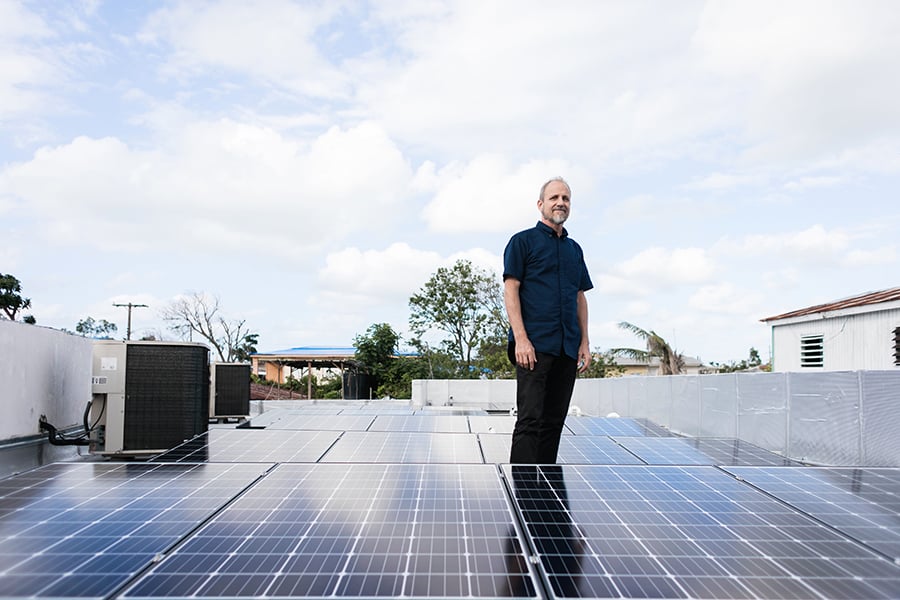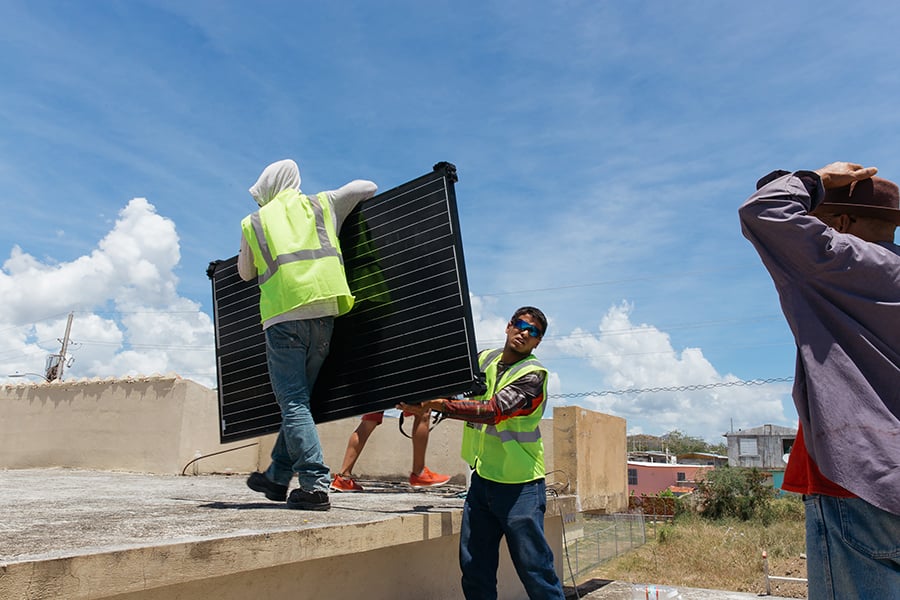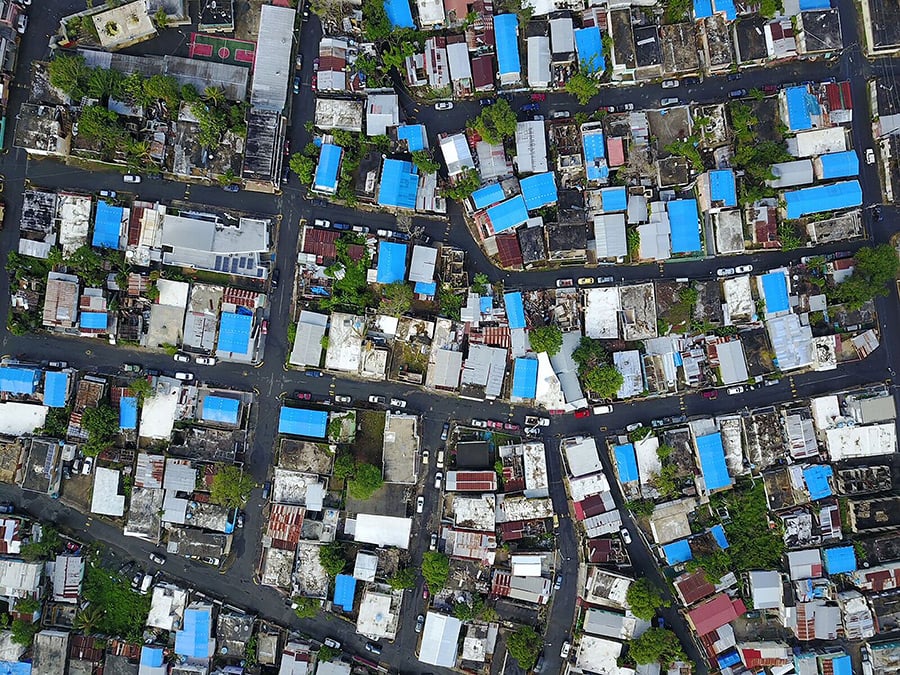
March 25, 2019
How Resilient Power Puerto Rico (RPPR) Is Building Sustainable Infrastructure and Strengthening Communities
Metropolis spoke with architect and RPPR president Jonathan Marvel about the initiative’s work and what it aims to accomplish.

After 2017’s hurricane season—and the federal government’s sluggish response to the destruction—the Puerto Rican–born architect Jonathan Marvel stepped in to aid in the recovery, forming Resilient Power Puerto Rico (RPPR), which was recognized with a Presidential Citation by the AIA in February. Here he discusses RPPR’s work, as well as Puerto Rico’s spatial, economic, and logistical context.
Akiva Blander: What’s the status right now of the initiative? What’s going on on the ground?
Jonathan Marvel: We’re now entering our second year. Our goal is ultimately to have 200 community centers operating with solar panels and batteries in order to produce and store power at the same time.
These informal neighborhoods are high density, meaning they’re communities of two, three, four thousand people that we can service with one solar hub. In the first stage, the first year [of RPPR], we raised money for 25 of these solar hubs, money largely from the diaspora of Puerto Ricans living in New York and Silicon Valley, and that wave of 25 is almost finished. Their basic hardware consists of 20 solar panels at 350 watts per panel, so we can generate enough energy to operate a community center, which is going to provide off-the-grid renewable electricity, so no need for a fossil fuel–burning generator.

AB: The hurricanes disrupted all facets of daily life. Why did you decide to focus on providing power to residents?
JM: Electricity is the source of survival. Without electricity on an island-wide capacity we have nothing. You can’t pump water for drinking, you can’t process sewage, you can’t pump gas for your cars, you can’t operate any kinds of electronics or communication devices. Without power you really do come to a halt as a society. We quickly defined electricity as our mission, and we wanted it to be renewable electricity because it’s clean and it’s looking toward the future, meaning in about five years these systems pay for themselves based on the electricity being produced offset against the cost of that electricity.
AB: It sounds like built into the work are concepts of resilience—to future weather events, but also social, economic, and communal.
JM: You hit the nail on the head. It’s allowing the last in line to get power on a decentralized basis. We are targeting the people in need. It’s poor people who are having a hard time surviving. Those are the people we wanted to go to first because they’re the ones in the greatest need. We’ve been able to get a picture of the island’s informal communities, because there was a planning study done about 25 years ago by a planner named Lucilla Fuller Marvel, who happens to be my mother. She produced a document for the governor at the time that researched and interviewed and put on paper who was living where for the first time in the island’s history.

AB: What about settlements in Puerto Rico differs from their mainland counterparts, and how did that influence the work you were doing?
JM: Settlements in Puerto Rico are really a product of the 1940s and ’50s, when land was redistributed. Puerto Rico has a very high rate of homeownership—over 65 percent—because people were given land for free, and you could basically DIY your structure and add on to it over time.
But it’s a fragile construction. It’s gone from wood to concrete over the generations. People add on and rebuild and make it more robust. Everybody wants a concrete roof and concrete walls. That’s what survives the annual hurricanes. Puerto Ricans are used to hurricanes by now.
Also everybody in San Juan and around the island owns not one but maybe two or three vehicles, because there’s no public transportation, so a lot of the structures have cars associated alongside them. There are also high-density marginalized areas, so they’re built alongside existing cities and towns. They’re built in these places that flood and have mudslides. Those are probably the standout differences.
AB: What should everyone know about Puerto Rico and about the response to the hurricane? And how can we help improve the situation?
JM: I think everyday Americans have to, like we did for New Orleans, come down to Puerto Rico. Things are back to normal in San Juan. There are lots of wonderful opportunities to contribute. Financially there are lots of not-for-profits to benefit from donations. Puerto Rico is a small island in the Caribbean. There’s lots to do there. There’s a lot of diversity. It’s part of North America, part of the United States of America, but also very much a part of Latin America and the Caribbean, and in that way it’s unique.

You may also enjoy “OPINION: When it Comes to Resiliency, Boston Can Think Bigger.”
Would you like to comment on this article? Send your thoughts to: [email protected]





